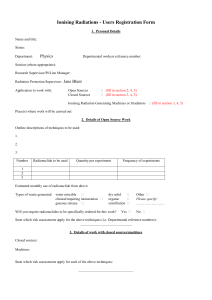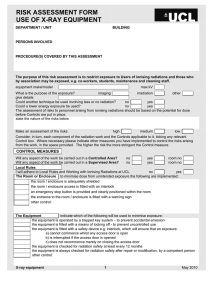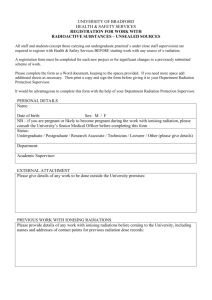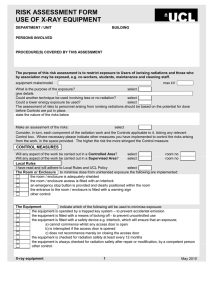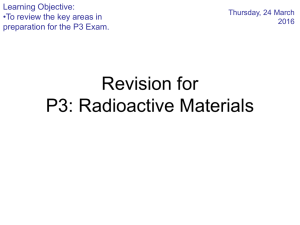Letter of Appointment as Radiation Protection Supervisor (RPS).
advertisement
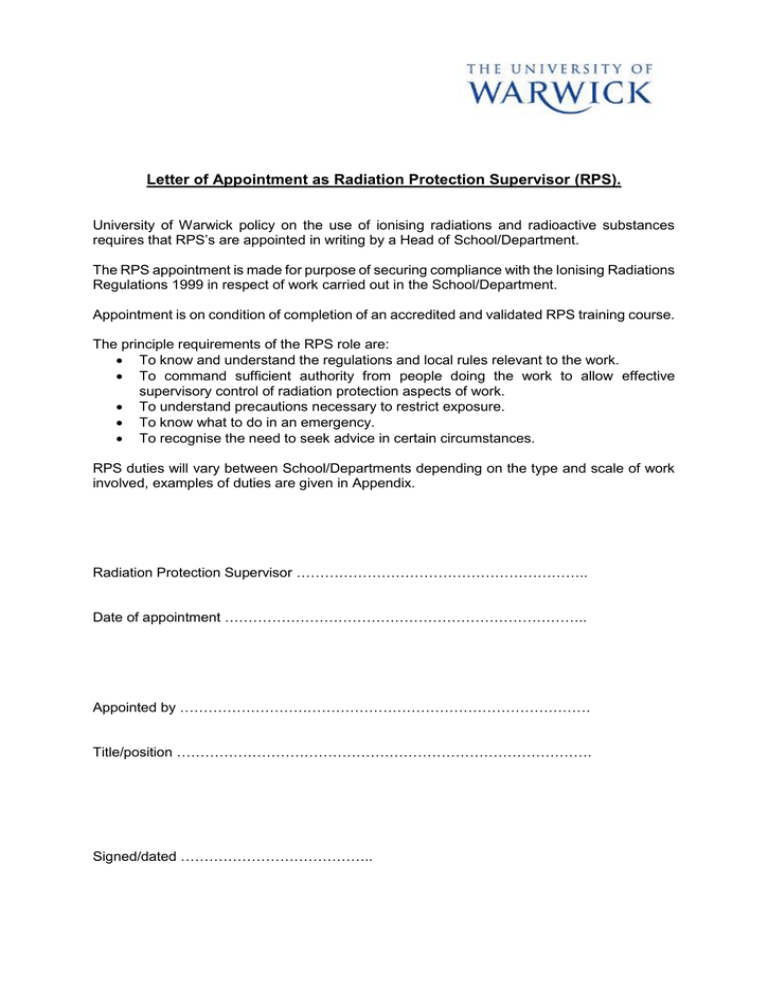
Letter of Appointment as Radiation Protection Supervisor (RPS). University of Warwick policy on the use of ionising radiations and radioactive substances requires that RPS’s are appointed in writing by a Head of School/Department. The RPS appointment is made for purpose of securing compliance with the Ionising Radiations Regulations 1999 in respect of work carried out in the School/Department. Appointment is on condition of completion of an accredited and validated RPS training course. The principle requirements of the RPS role are: To know and understand the regulations and local rules relevant to the work. To command sufficient authority from people doing the work to allow effective supervisory control of radiation protection aspects of work. To understand precautions necessary to restrict exposure. To know what to do in an emergency. To recognise the need to seek advice in certain circumstances. RPS duties will vary between School/Departments depending on the type and scale of work involved, examples of duties are given in Appendix. Radiation Protection Supervisor …………………………………………………….. Date of appointment ………………………………………………………………….. Appointed by …………………………………………………………………………… Title/position ……………………………………………………………………………. Signed/dated ………………………………….. Letter of Appointment as Radiation Protection Supervisor (RPS). Appendix Examples of RPS duties. • Provide support and advice to assist staff in the day to day control of activities using ionising radiation, including disposal of waste radioactivity. • Assist in carrying out risk assessments for work involving radioactive sources and assist in writing Local Rules. • Make sure staff are provided with information, instruction and training on safe working with substances and equipment capable of emitting ionising radiation. • Supervise keeping of source records for radioactive sources. • Undertake physical stock checks of radioactive sources. • For their area of responsibility, set up schemes for monitoring and recording of contamination levels and/or radiation dose rates. • Arrange for the immediate repair of any defective safety or warning system associated with equipment which emits ionising radiation. • Co-ordinate the periodic testing of radiation monitoring equipment. • Co-ordinate the periodic leak testing of sealed radioactive sources • Make sure that contingency plans exist in the event of an accident or incident, particularly if a person is accidentally exposed to ionising radiation or there is damage, theft or loss of a radioactive source.

